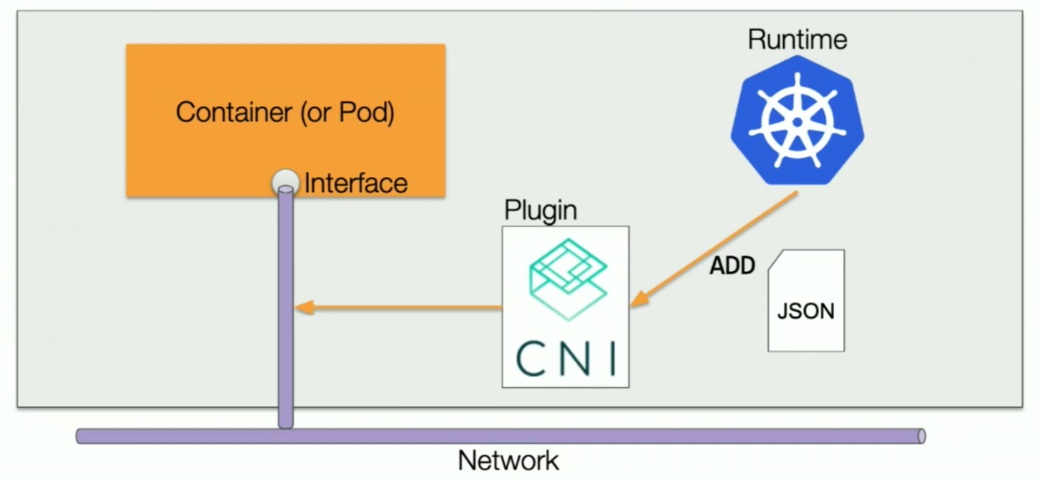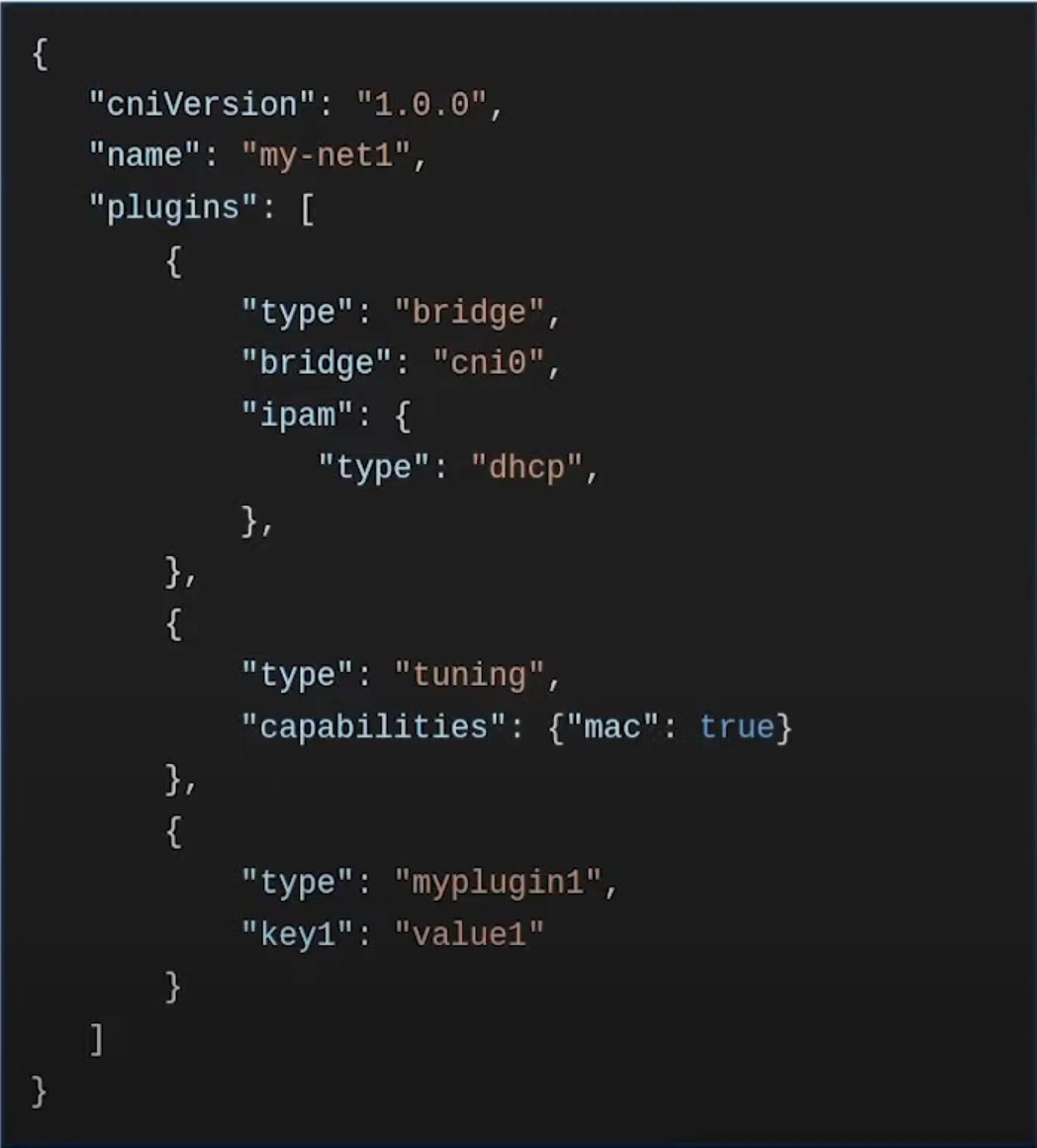CNI Self-assessment
This assessment was created by community members as part of the Security Pals process, and is currently pending changes from the maintainer team.
Authors: Jason Lin, Quan Phung, Jackson Qu, Grace Liu
Table of contents
- Metadata
- Overview
- Self-assessment use
- Security functions and features
- Project compliance
- Secure development practices
- Security issue resolution
- Appendix
Metadata
| Assessment Stage | Incomplete |
| Software | A link to CNI’s repository. |
| Security Provider | No |
| Languages | Go |
| SBOM | None generated by the CNI project at the moment |
Security links
| Doc | url |
|---|---|
| Security file | README.md#Security |
| Default and optional configs | CNI Specification outlines required keys, optional keys, and protocol parameters |
Overview
Container Network Interface (CNI), a project under the Cloud Native Computing Foundation, includes a set of guidelines and a software library used for developing plugins that set up network interfaces within Linux and Windows containers. Its primary goal is managing container network connectivity and deallocating resources once a container is removed. This specific focus has led to broad support for CNI and a straightforward implementation process due to its simple specification.
Background
With the rapid development of application containers on Linux, networking in this area is still not well addressed as it is highly environment-specific. To deal with this problem, developers seek to create a network layer that is pluggable for container runtimes. Ultimately, CNI was introduced as a standardized interface between network plugins and container execution. The CNI team provides a library for integrating CNI into applications and maintains some reference plugins for CNI.

Actors
The following are the actors found in CNI project:
- CNI Plugin: A program that applies a specified network configuration. It interfaces with a variety of networking solutions to provide flexible networking capabilities.
- Container: A network isolation domain, though the actual isolation technology is not defined by the specification.
- Container Runtime: Is responsible for executing CNI plugins. It interacts with plugins to apply network configurations to individual containers.
- Network: A group of endpoints that are uniquely addressable that can communicate amongst each other. This could be either an individual container (as specified above), a machine, or some other network device (e.g. a router). Containers can be conceptually added to or removed from one or more networks.It includes configuration data such as IP addresses, routing rules, and network policies.
Actions
Action Overview
- A format for administrators defines network configurations
- A protocol for container runtimes makes requests to network plugins with parameters from environment variables and network configuration
- With the supplied configuration, a procedure executes the plugins.
- CNI plugins may also have a procedure to delegate functionality to other plugins
- Data types for plugins return their results to the runtime
Action 1: Network Configuration Format
CNI defines a network configuration format for administrators. It contains directives for both the container runtime as well as the plugins to consume. At plugin execution time, this configuration format is interpreted by the runtime and transformed into a form to be passed to the plugins.
- Example configuration:

Action 2: Execution Protocol
The CNI protocol is based on execution of binaries invoked by the container runtime. CNI defines the protocol between the plugin binary and the runtime. CNI defines 4 operations: ADD, DEL, CHECK, and VERSION. These are passed to the plugin via the CNI_COMMAND environment variable.
Action 3: Execution of Network Configurations
A container time interprets a network configuration and executes plugins accordingly. A runtime can add, delete, or check a network configuration in a container, which results in a series of plugin ADD, DELETE, or CHECK executions correspondingly.
Action 4: Plugin Delegation
There are some operations that, for whatever reason, cannot reasonably be implemented as a discrete chained plugin. Rather, a CNI plugin may wish to delegate some functionality to another plugin. One common example of this is IP address management.
Action 5: Result Types
Plugins can return one of three result types:
- Success
- Error
- _Version
Goals
General
- CNI defines a common interface between the network plugins and container execution
- CNI is language-agnostic and a vendor-neutral specification
- Backwards compatible: plugins are able to easily implement all versions of the specification and some helper code is available to convert between versions.
Security
- Limit which file paths are included when searching for a CNI plugin on a system.
Non-goals
General
- Dynamic updates to existing network configurations
- Dynamic policies for network bandwidth and firewall rules
Security
- Stop a container runtime from executing CNI plugins
- Restrict what a plugin does
- Manage the security of the container it interacts with
Self-assessment use
This self-assessment is not intended to provide a security audit of CNI, or function as an independent assessment or attestation of CNI’s security health.
This document serves to provide CNI users with an initial understanding of CNI’s security, where to find existing security documentation, CNI plans for security, and general overview of CNI security practices, both for development of CNI as well as security of CNI.
This document provides the CNCF TAG-Security with an initial understanding of CNI to assist in a joint-assessment, necessary for projects under incubation. Taken together, this document and the joint-assessment serve as a cornerstone for if and when CNI seeks graduation and is preparing for a security audit.
Security functions and features
- Critical:
- As documented in the required keys for plugin configuration objects , the ’type’ string containing the name of a CNI plugin cannot contain disallowed characters in file paths (e.g., ‘/’ or ‘\’). Disallowing such characters prevents using characters such as “../” to reference binaries elsewhere on the system.
- Security relevant:
- As documented in the protocol parameters passed to plugins , the environment variable CNI_PATH contains the list of paths to search for CNI plugin executables. This limits where CNI can look which could prevent unintended binaries from being executed.
Project compliance
CNI does not document meeting any particular security standards or sub-sections.
Secure development practices
Development Pipeline
The Contributing document contains details on development workflow. The main points are summarized below.
- Contributions are made via GitHub pull requests
- Work is done in a topic branch (usually branched from main)
- Contributors must sign off their commits which indicates they agree to the Developer Certificate of Origin ( DCO )
- There is a test suite provided that should be run for any new features or bug fixes.
- Pull requests should include tests for new code and old code
- Pull requests trigger a
workflow
. The jobs covered include:
- Linting
- Build for linux architectures
- Running tests on Linux amd64
- Building and running tests on Windows
- In general, pull requests are merged once one or two maintainers endorse it.
Communication Channels
- Internal Team members communicate with each other through the Weekly maintainers meeting using Jitsi , #cni and #cni-dev channel on the CNCF slack , cni-dev Google Group , or GitHub issues
- Inbound Users communicate with the team though the #cni and #cni-dev channel on the CNCF slack , cni-dev Google Group , or GitHub issues .
- Outbound Team members communicate with users through the #cni channel on the CNCF slack , cni-dev Google Group .
Ecosystem
- CNI is a vendor-neutral specification so it can be used by any system that chooses to implement it. It is used by Kubernetes, Mesos, CloudFoundry, CRI-O, and more .
Security issue resolution
Responsible Disclosures Process
As documented under the Contact section of CNI’s documentation , issues can be reported privately via email to the email addresses listed in the MAINTAINERS file.
Incident Response Process
The CNI team does not have an incident response process defined.
Appendix
Known Issues Over Time
- CVE-2021-20206 (CVSS v3.1 Base Score: 7.2 High Severity) Arbitrary path injection via type field in CNI configuration. A path name flaw allowed execution of binaries elsewhere on the system including binaries that are not CNI plugins. This was fixed in libcni version 0.8.1 by tightening up the plugin-finding logic .
- CVE-2019-9946 (CVSS v3.0 Base Score: 7.5 High Severity) Incorrect rule insertion by CNI ‘portmap’. An issue with CNI portmap was found with Kubernetes, which allowed it to match incoming traffic even if better, more specific rules existed later in the chain. This was fixed in version 0.7.5 by appending instead of prepending rules .
CII Best Practices
Current Progress (Last updated January 2021):
- CNI does not meet a passing level (only 72% of the way there)
- Progress should be updated as there are currently several practices marked with ‘?’
- There are no primary developers identified as having knowledge of designing secure software or preventing and handling vulnerabilities.
- Static code analyzers are not used to automatically catch vulnerabilities in code.
Case Studies
Cilium Integration with Kubernetes:
- Description: Cilium is used in Kubernetes environments for network security and observability. It leverages CNI’s plugin-based network connectivity management to provide networking and security in Kubernetes clusters. Cilium specifically enhances Kubernetes by offering API-aware network security, load balancing, and visibility for microservices. The integration of Cilium with Kubernetes via CNI demonstrates CNI’s compatibility and effectiveness in real-world applications.
- Key Points:
- Enhances Kubernetes network security and observability.
- Leverages CNI for seamless integration.
- Provides API-aware network security, load balancing, and visibility for microservices.
- Link: Cilium users and real world case studies
Isovalent’s Use of CNI for Kubernetes Networking:
- Description: Isovalent, the company behind Cilium, utilizes CNI for networking in Kubernetes environments. This case study highlights the advanced networking capabilities of CNI as employed by Isovalent. The use of CNI in Isovalent’s Kubernetes networking solutions showcases the flexibility and scalability of CNI in handling complex networking requirements.
- Key Points:
- Isovalent employs CNI in Kubernetes networking.
- Demonstrates CNI’s flexibility and scalability in complex networking environments.
- Link: Top 20 Cilium Use Cases - Isovalent
These case studies provide insights into how CNI is used in practice, emphasizing its role and effectiveness in Kubernetes networking and security.
Related Projects/Vendors
- Container Network Model (CNM)
/
libnetwork
is a standard proposed by Docker and is also supported in several products such as Project Calico, Cisco Contiv, and Weave.
- Key features that separate it from CNI:
- CNM uses a network sandbox to isolate a container’s network configuration.
- CNM features the use of user-defined labels (key-value pairs) passed as metadata to inform network driver behavior.
- Factors that affect adoption:
- There are design choices and assumptions made that can be an issue for systems such as Kubernetes , whereas CNI is simpler to implement and support.
- Key features that separate it from CNI:
- Netavark
is a network configuration tool for containers. It was developed by Podman and will replace CNI in Podman version 5.0.
- Primary differences:
- Netavark does not use a plugin model like CNI. All setup is performed directly by Netavark.
- This resulted in less overhead compared to executing multiple plugins in sequentially to configure a network.
- Containers can set static IP and MAC addresses for individual networks as opposed to only being able to set them for a container on a single network.
- Netavark does not use a plugin model like CNI. All setup is performed directly by Netavark.
- Factors that affect adoption:
- Is mainly being designed for use with Podman.
- Primary differences:
Threat Modeling
See the CNI Lightweight Threat Assessment document
Feedback
Was this page helpful?
Glad to hear it! Please tell us how we can improve.
Sorry to hear that. Please tell us how we can improve.